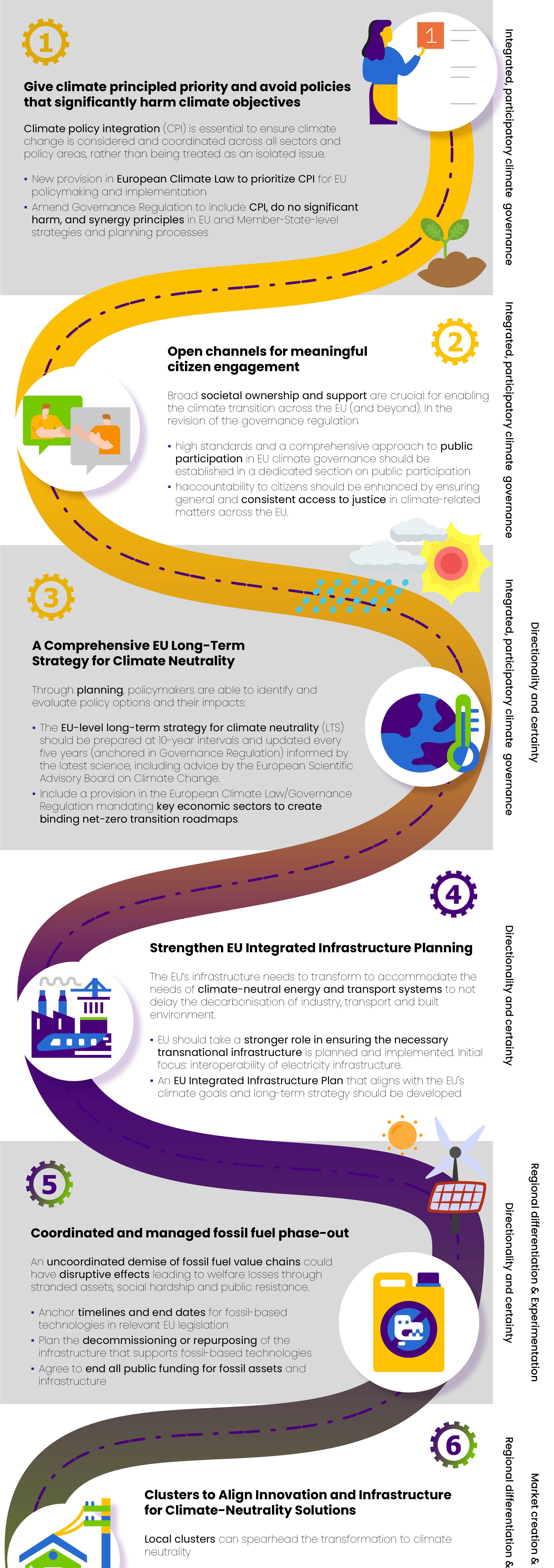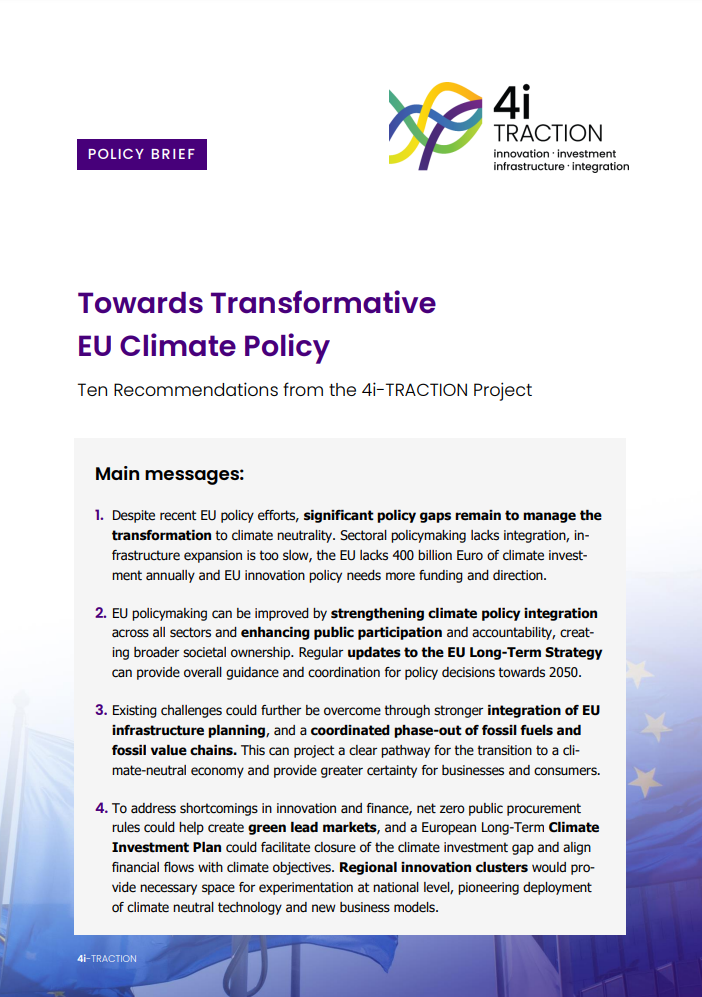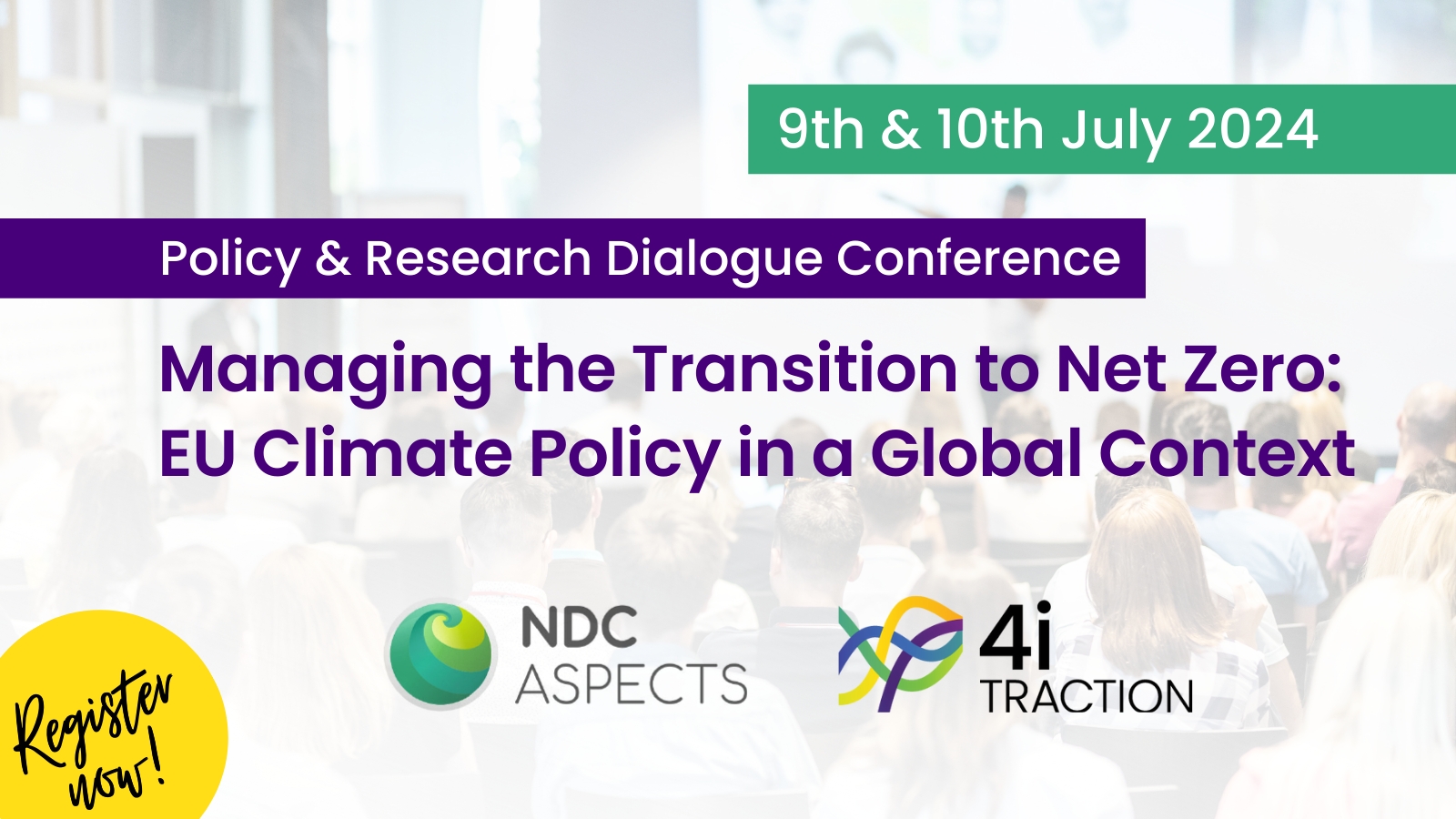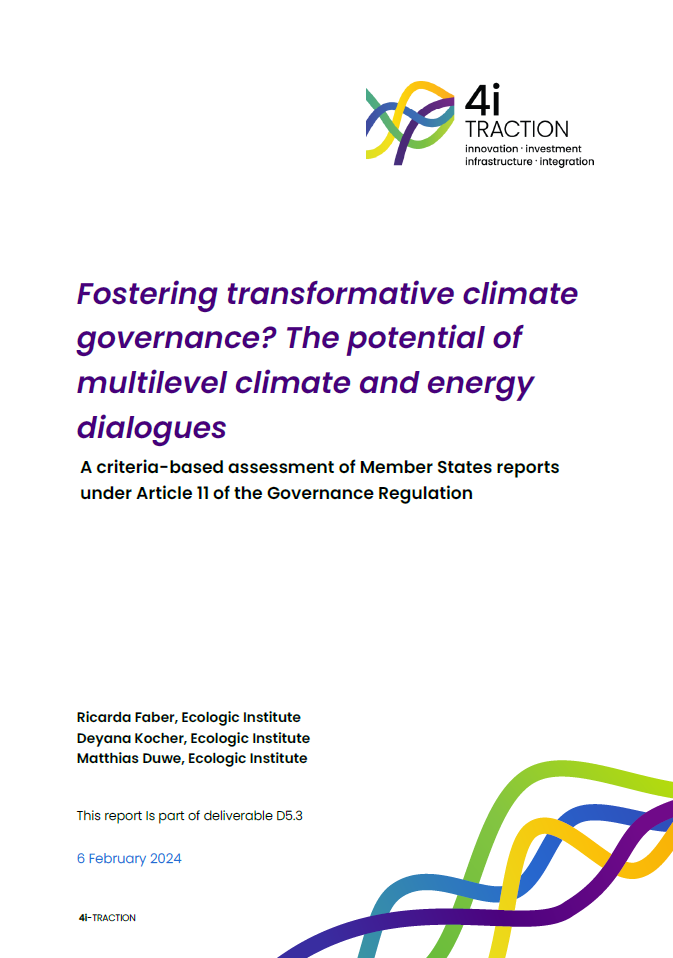Policy Avenues towards a Climate-Neutral Europe
- Publikation
- Zitiervorschlag
Görlach, Benjamin, Leon Martini, Ricarda Faber, Aaron Best, Pol Fontanet Pérez (2022): Report on core instruments and avenues for transformative climate policies. 4i-TRACTION Deliverable 4.1. Ecologic Institute; Berlin.
In dem Bericht werden vier politische Wege aufgezeigt, wie die EU Klimaneutralität erreichen könnte. Die politischen Wege bestehen aus einer Mischung von politischen Instrumenten, die im Laufe der Zeit aufeinander folgen, und den institutionellen Vorkehrungen zu deren Umsetzung. Jeder politische Weg verkörpert ein anderes Paradigma, d. h. einen anderen Ansatz für die (Klima-)Politikgestaltung. Sie skizzieren somit verschiedene Wege, die die EU einschlagen könnte, um ihre Klimapolitik auf das Ziel der Klimaneutralität bis 2050 auszurichten.
Die politischen Wege wurden zusammen mit fachkundigen Interessengruppen in einem Politiklabor entwickelt, das aus mehreren Workshops bestand. Die Experten hatten die Aufgabe, zu skizzieren, wie eine transformative EU-Klimapolitik aussehen könnte, wenn sie einem der vier Paradigmen folgt. Die sich daraus ergebenden Politikansätze wurden vom Forschungsteam weiterentwickelt und werden in dem Bericht beschrieben.
- Sprache
-
Englisch
- Autorenschaft
-
Pol Fontanet Pérez
- Credits
This report would not have been possible without the experts that participated in the 4i-TRACTION policy lab. We are thankful for their generosity with their time and their valuable insights. Moreover, the authors would like to thank Bettina Kampman (CE Delft), Harm Rienks (WUR), and Claire Dupont (U Ghent) for constructive feedback on a draft of this report. Matthias Duwe (Ecologic Institute) provided valuable input to the conceptualisation of the policy lab. Brendan Moore (VUB) and Emiel van der Toorn (CE Delft) helped realising the workshop in Brussels. So did Jonathan Gardiner (Ecologic Institute), who also provided important editorial support. Several consortium members, who participated at the pilot in Berlin and at the internal workshops, provided useful comments. A special thanks to Dexter Docherty, Trish Lavery (both OECD), Vadim Konnenko (EEA), and Hanna Parnow (ZOE) for their guidance in designing the co-creative workshops and foresight activities. All errors and omissions remain
those of the authors- Finanzierung
-
Europäische Kommission, Generaldirektion Forschung & Innovation (GD Forschung & Innovation), International - Verlag
-
Ecologic Institut, Deutschland - Jahr
- Umfang
- 141 pp.
- Projekt
- Projekt-ID
- Inhaltsverzeichnis
-
Gesamtes Inhaltsverzeichnis
Executive Summary
1. Introduction
2. Approach
2.1 Overall approach
2.2 Policy lab process
3. Paradigms of climate policymaking
3.1 From schools of thought to policy paradigms
3.2 The four selected paradigms
3.2.1 Neoclassical environmental economics
3.2.2 Industrial policy and mission innovation
3.2.3 Planned transition approaches
3.2.4 Post-growth, de-growth, and ecological economics
3.3 The four paradigms in current EU climate policy
4. Four policy avenues towards a climate-neutral EU
4.1 Policy avenue 1: Green Economic Liberalism
4.1.1 Core ideas and principles of the policy avenue
4.1.2 Description of the policy avenue
4.1.3 Tackling the 4i’s
4.1.3.1 How will the policy avenue address innovation?
4.1.3.2 How will the policy avenue address investment and finance?
4.1.3.3 How will the policy avenue address infrastructure?
4.1.3.4 How will the policy avenue address integration?
4.2 Policy avenue 2: Green Industrial Policy
4.2.1 Core ideas and principles of the policy avenue
4.2.2 Description of the policy avenue
4.2.3 Tackling the 4i’s
4.2.3.1 How will the policy avenue address innovation?
4.2.3.2 How will the policy avenue address investment and finance?
4.2.3.3 How will the policy avenue address infrastructure?
4.2.3.4 How will the policy avenue address integration?
4.3 Policy avenue 3: Directed Transition
4.3.1 Core ideas and principles of the policy avenue
4.3.2 Description of the policy avenue
4.3.3 Tackling the 4i’s
4.3.3.1 How will the policy avenue address innovation?
4.3.3.2 How will the policy avenue address investment and finance?
4.3.3.3 How will the policy avenue address infrastructure?
4.3.3.4 How will the policy avenue address integration?
4.4 Policy avenue: Sufficiency and Degrowth
4.4.1 Core ideas and principles of the policy avenue
4.4.2 Description of the policy avenue
4.4.3 Tackling the 4i’s
4.4.3.1 How will the policy avenue address innovation?
4.4.3.2 How will the policy avenue address investment and finance?
4.4.3.3 How will the policy avenue address infrastructure?
4.4.3.4 How will the policy avenue address integration?
5. Core policy instruments across the avenues
6. Governance implications and political context
6.1 Political feasibility
6.2 Robustness in turbulent times
6.3 Whither reform? Implications for EU politics
7. Conclusion
8. References
Annex A: Policy Lab material
Annex B: Policy avenue posters
Annex C: List of policy instruments - Schlüsselwörter
-
Europe




